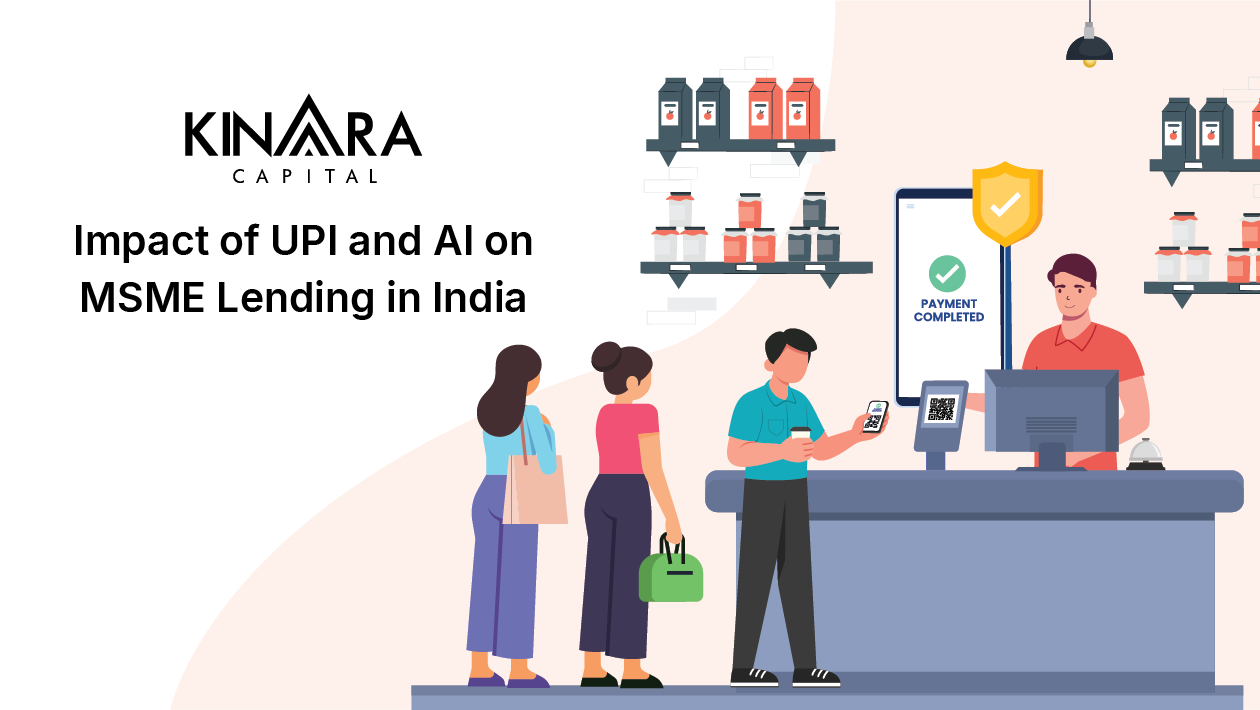
MSME lending in India is going through a drastic digital transformation, and technologies like UPI (Unified Payments Interface) and AI (Artificial Intelligence) play key roles in it. They make the loan process more efficient and accessible. This technological shift is essential for bridging the significant MSME credit gap faced by MSMEs in India. By introducing financial access and support through digital lending, the economic sector in India has seen significant growth. This process helps simplify operations, reduce costs, and provide valuable financial solutions to MSMEs.
At present, India has an estimated credit gap of Rs. 25 trillion, and MSME lending plays a vital role in addressing this issue. Due to stringent requirements, lengthy approval processes, and extensive documentation, traditional lending methods often fail to serve MSMEs. Steps in digital lending in India that not only offer loans efficiently but also provide faster alternatives.
Digital lending platforms use technologies like AI for accurate credit assessment and UPI for instant transactions. This integration improves MSME lending and also meets immediate operational needs. Improved access to finance helps MSMEs sustain and expand their businesses, contributing significantly to the economy. This process reduces the time and cost associated with traditional lending, making digital lending a more viable option for small enterprises.
The digital lending process is simplified with the integration of UPI in India. Receiving and repaying for loans is light work with UPI. It allows instant and secure transactions, making it easier for MSMEs to get their finances. Besides that, AI efficiently evaluates the creditworthiness of a loan applicant, further making it easier to get approval. Once approved, the funds are credited instantly through UPI. It also reduces the need for physical paperwork and long wait times, making the lending process hassle-free.
Therefore, digital lending in India has become more user-friendly, allowing MSMEs to focus on growth rather than financial hurdles. Both UPI and digital lending platforms help small businesses raise the necessary funds, which in turn promotes economic growth and stability.
Use UPI to increase digital lending in the MSME sector. It enables real-time solutions and easy money transactions by using your mobile devices. This payment system allows instant transfers of money between bank accounts via mobile devices. It simplifies the loan disbursement and repayment process, making it faster and more efficient.
The process begins when a user initiates a transaction through a UPI-enabled app and authenticates the transaction with a Mobile Personal Identification Number (MPIN). UPI processes the transaction immediately, transferring funds between the sender’s and receiver’s bank accounts. Both parties receive instant notifications confirming the success of the transaction.
The integration of UPI has changed the lending process for MSMEs in India, particularly in addressing the MSME credit gap. One of the significant benefits is instant loan approval. Once a loan is approved, the funds get transferred immediately to the borrower’s bank account via UPI. It has reduced waiting times and enabled MSMEs to meet their financial needs quickly, bridging the gap with timely access to capital.
Another advantage of integrating UPI is real-time tracking. Through UPI transactions, lenders can monitor loan repayments in real time. This maintains transparency and reduces risks, improving the overall lending experience for both lenders and borrowers.
Additionally, UPI transactions are cost-effective, as they reduce operational costs for lenders. This allows lenders to offer more competitive interest rates, making loans more affordable for MSMEs. The reduced costs and increased efficiency benefit both the lending institutions and the borrowers.
The UPI-generated transaction data can be used to assess creditworthiness and tailor loan products to the specific needs of MSMEs. This data-driven approach improves the accuracy of credit assessments and reduces the risk for lenders.
Digital lending and UPI provide numerous benefits to MSMEs, significantly improving their access to finance and overall operational efficiency, thereby addressing the critical challenge of the MSME credit gap.
Digital lending platforms, integrated with UPI, allow MSMEs to get loans quickly without long approval processes. This speed helps businesses manage their operations effectively.
It reduces operational costs compared to traditional methods. UPI transactions are also cheaper, allowing lenders to offer lower interest rates to MSMEs.
UPI enables instant fund transfers once a loan is approved, making sure MSMEs get the money they need right away.
Digital platforms use data from Aadhaar cards, GST, and UPI to accurately assess credit. This helps them offer better-suited financial products to MSMEs.
UPI uses two-factor authentication, making transactions secure and building trust among MSMEs.
These platforms simplify the loan application process, allowing MSMEs to get loans faster and with less hassle.
Digital lending and UPI help banks reach underserved MSMEs, providing financial access to more businesses.
Artificial Intelligence (AI) has an incredible impact on the MSME lending scene in India through AI digital lending. Lenders can use AI to perform more accurate credit assessments and provide personalised loans. With the help of algorithms, one can analyse vast amounts of data, such as transaction history and business performance, to evaluate the creditworthiness of MSMEs. This helps lenders make decisions faster and improves risk management.
It also automates the lending processes and reduces the need for manual intervention. This speeds up loan approvals, and the applicant gets the capital faster. It helps bridge the significant credit gap that MSMEs face in India, making it easier for small businesses to access the funds they need for growth and development.
The digital transformation, driven by UPI and AI, is revolutionising MSME lending in India. UPI ensures quick transactions, while AI personalises lending solutions. NBFCs (Non-Banking Financial Companies) like Kinara Capital provide collateral-free business loans with fast disbursement. Unlike traditional banks, NBFCs offer financial services without a banking license, focusing on faster, more flexible lending options. With the help of technology, Kinara Capital efficiently processes loans and supports MSMEs with products like working capital and machinery purchase loans. Our customer-centric approach fosters financial inclusion, which is crucial for MSME growth. This integration bridges the credit gap by encouraging a dynamic economic environment.
UPI and AI work together to simplify the lending process for MSMEs by enabling quick, secure transactions and accurate credit assessments. UPI provides instant fund transfers and real-time payment tracking, while AI analyses transactional data to evaluate creditworthiness. This integration reduces manual processes and speeds up loan applications.
MSMEs can use UPI and AI to get funds quickly and efficiently. By using UPI, businesses can receive and repay loans instantly, which improves cash flow management. AI helps MSMEs by providing faster loan approvals based on comprehensive data analysis, including transaction history and business performance. This reduces the reliance on traditional credit scores and enables MSMEs to secure loans even with limited financial documentation.
AI has automated the credit assessment of the MSME lending process. The algorithms analyse the data, including transaction history and spending patterns, to predict the creditworthiness of borrowers. This results in faster and more accurate loan approvals, reduces the risk of defaults and improves the overall efficiency of the lending process. It also helps in detecting fraud and managing risks, ensuring a secure lending environment.
UPI is transforming MSME lending in India by enabling quick and secure financial transactions. It reduces the time required for loan disbursals and repayments, making the lending process more efficient. UPI’s real-time payment options help MSMEs manage their finances better and ensure timely repayments, which can improve their credit scores. Additionally, UPI’s widespread adoption and ease of use make it a vital tool for enhancing financial inclusion and accessibility for MSMEs across the country.
